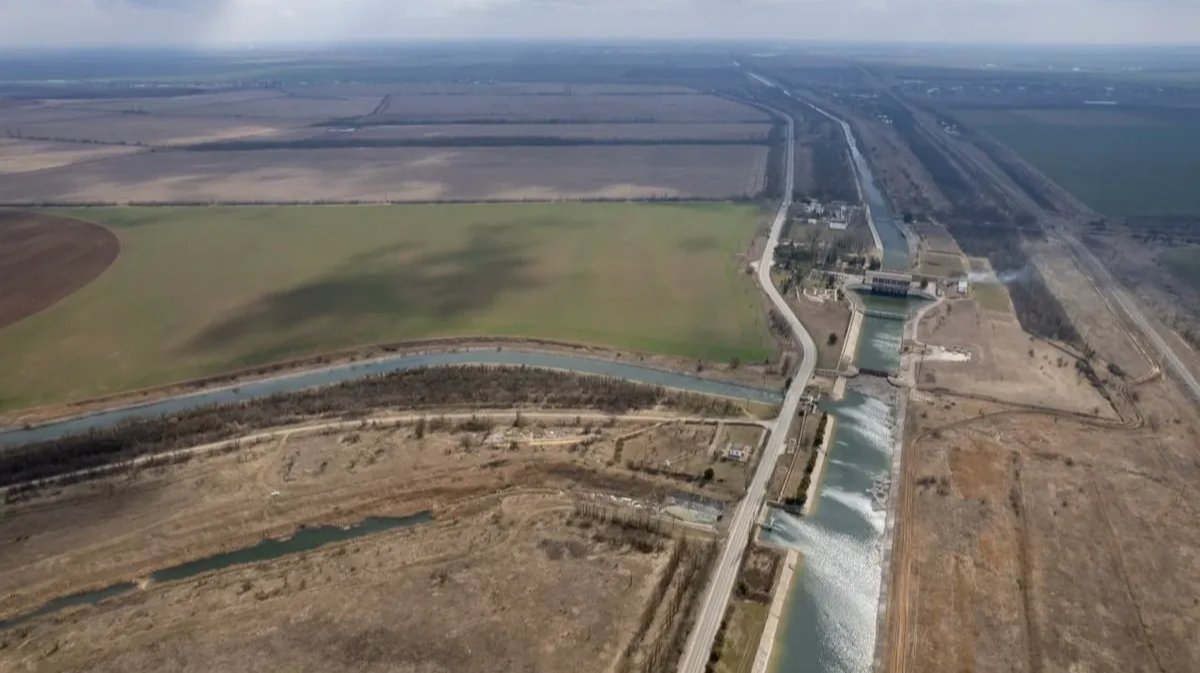What is going on with Crimea’s water supply
Water supply is Crimea’s sore point. Ukraine stopped providing the peninsula with water from the Dnipro River after Russia had annexed Crimea in 2014. Prior to the annexation, the Dnipro water provided Crimea with 85% of its fresh water needs, coming via the North Crimean Canal.
Up to 80% of the Dnipro water was used for agriculture (of which 60% was allocated for rice production and pond fish farming). Only about 20% of the Dnipro water was used for centralised drinking water supply of Crimea’s cities and rural settlements.
The peninsula lived with very limited water supply for eight years. The northern and eastern parts of Crimea suffered most from the lack of the Dnipro water. Agricultural lands shrank 30-fold from 450,000 hectares to only 15,000. The peninsula had to give up cultivating produce with a high water consumption level, such as rice or buckwheat.
Soon after the Russian military captured the Kherson region in 2022, the dam that used to block the flow of water from the Dnipro into the North Crimean Canal was blown up. Since then,
Crimea’s authorities have been reporting new plans to revive agriculture in the region every now and then as over 210 million cubic metres of water was supplied to Crimea last year.
As the agricultural season was over, the authorities reported their first harvest. In 2022, a total of 712 hectares were sown with rice, and over 6 thousand tonnes of produce were harvested. In 2023, it was planned to increase the rice area to 4.5 thousand hectares.
On 12 May, Sergey Aksyonov, the Russia-installed governor of Crimea, wrote on Telegram that around 20,000 hectares of agricultural land for crops requiring irrigation, including grain, will be used in the peninsula thanks to the North Crimean Canal.
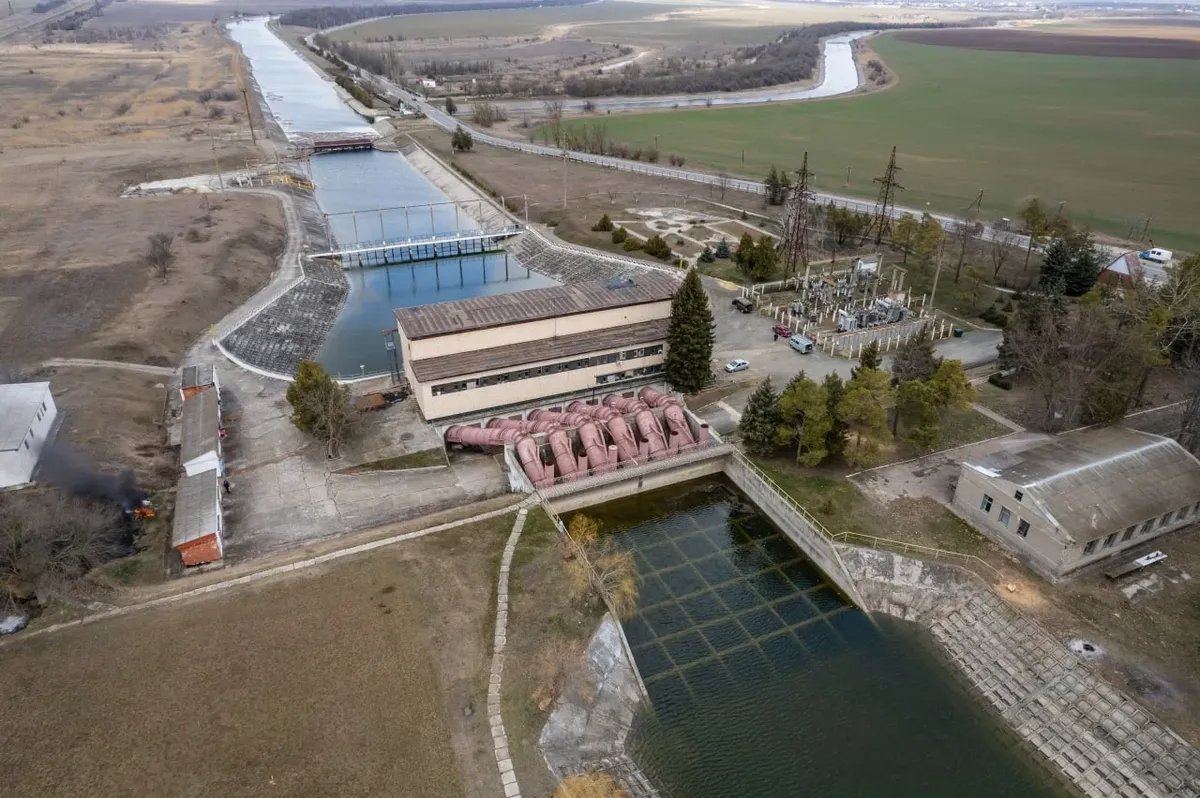
The North Crimean Canal. Photo: VK
This year, according to other data received from Crimea’s Ministry of Agriculture, the sown area was increased six-fold to about 3.5 thousand hectares, compared to the 630 hectares in 2022.
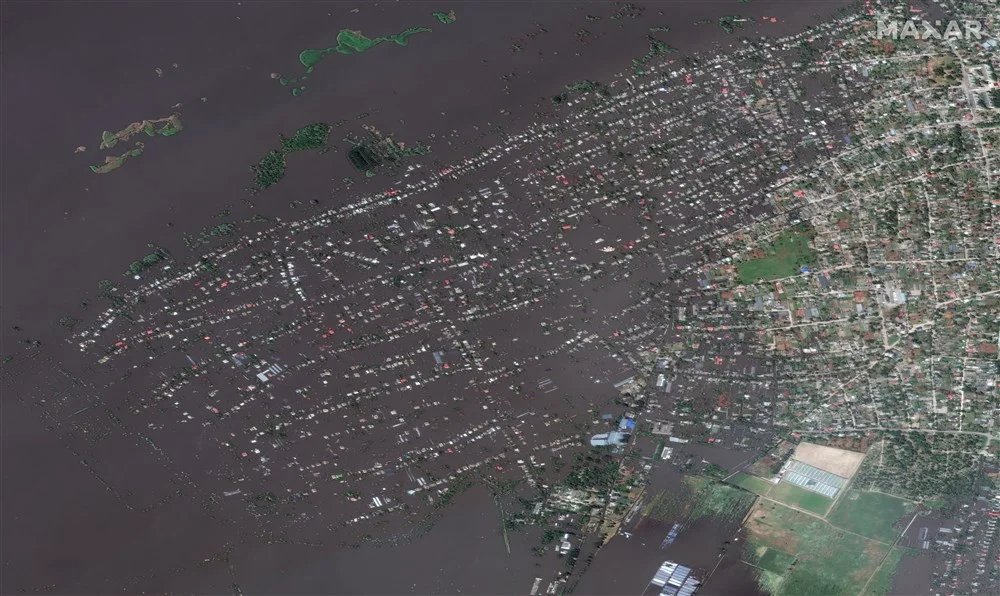
A satellite image provided by Maxar Technologies shows the flooded town of Krynky after the collapse of the Kakhovka HPP. Photo: EPA-EFE/MAXAR TECHNOLOGIES HANDOUT
Aksyonov was one of the first to react to the dam collapse as he noted that the North Crimean Canal is doomed to dry out very soon, harming rice producers who have already sown their fields.
The farmers, however, were promised compensation for the loss.
“As soon as the security issue is resolved, installing pumps on the Dnipro will provide up to 40 cubic metres of water per second to the North Crimean Canal. This will allow us to ensure full melioration in Crimea,” he said with optimism.
According to Yuriy Gotsanyuk, chairman of the Crimean Council of Ministers, Crimea’s reservoirs are about 80% full, which amounts to more than 280 million cubic metres of water. Sevastopol also has no water supply issues: there is no Dnipro water there as the city uses other sources.
At the same time, Viktor Danilov-Danilyan, a prominent ecologist with the Russian Academy of Sciences, does not share the optimism of the officials. His prediction is that the North Crimean Canal will run dry in the worst-case scenario: “Crimea will return to the same issue it had between 2014 and 2022, namely the shortage of drinking water for households, as well as critical deficiency of water for agriculture and partly for the industry. Only the south coast of Crimea will avoid the problems as this area has its own water reserves. The central and the eastern part of Crimea will face some serious challenges”.
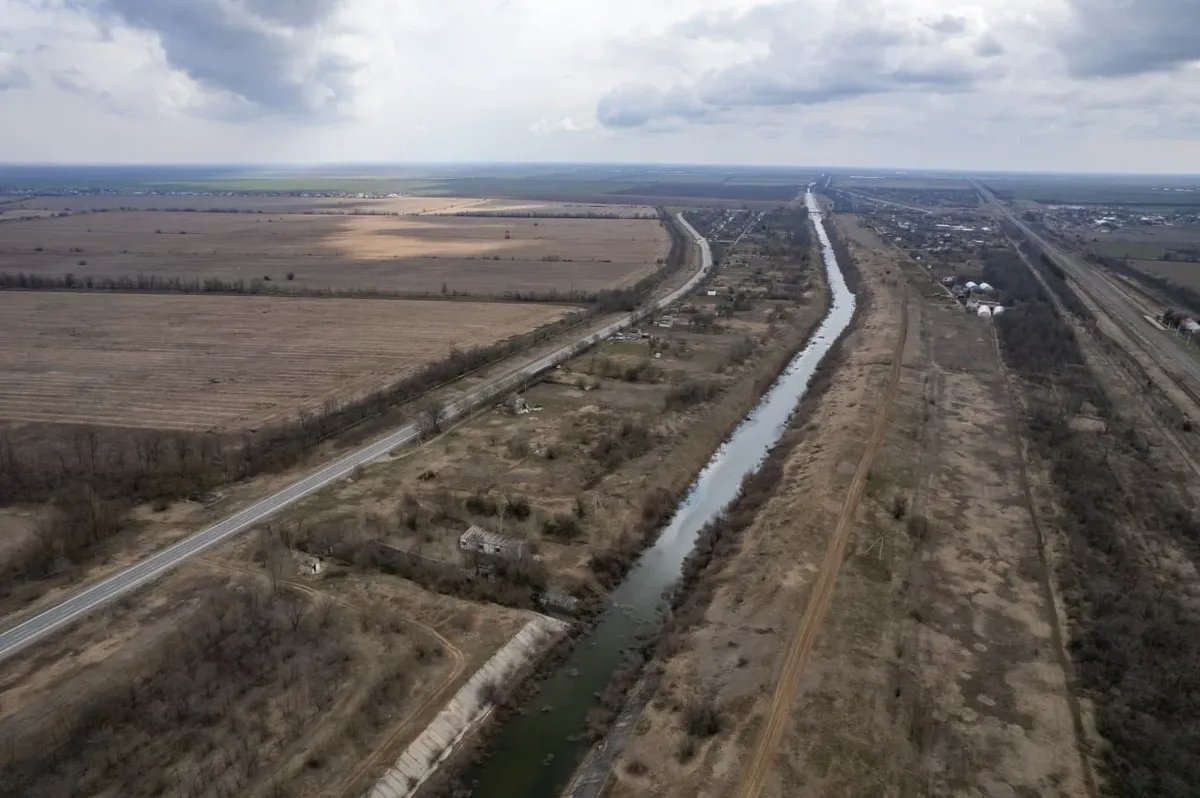
The North Crimean Canal. Photo: VK
The industrial facilities in northern Crimea are another sore point for the peninsula as those require large amounts of water. In particular, two facilities that used to take water from the North Crimean Canal are in question here: the Crimean sodium carbonate factory and Crimea TITAN, the facility that caused a local environment disaster in 2018 due to water shortages. Crimea TITAN produces titanium dioxide, mineral fertilisers, and sulphuric acid. The facility is located in Armiansk and is the town’s economic mainstay. The artificial lake TITAN used to dump its waste eventually dried up. “The area of the ‘lake’ is 42 square kilometres and it holds 30 million cubic metres of water. It ran dry. For the first time, the reservoir dried up to such an extent that sulphur dioxide began to evaporate and spread around the town,” the scientist says. “The toxic substance was everywhere: on houses, cars, on trees, on cucumbers and tomatoes plantations. Some people even had their cutlery covered with ‘rust’. Sulphur dioxide causes irritation of skin, nose and eyes mucous membranes, and in the worst cases, pulmonary edema. The locals were evacuated, and neighbouring settlements were also affected, although to a smaller extent.”
Putting off the de-occupation
Both sides of the war accuse each other of blowing up the dam. But how can a man-made disaster affect the course of hostilities, the counteroffensive of the Ukrainian military, and the potential return of Crimea under Ukrainian control?
Military expert Leonid Nersisyan spoke to Novaya-Europe and noted that the situation with the Kakhovka reservoir will have a negative impact on the Ukrainian counteroffensive in the short term due to flooding. Crossing the Dnipro with a lot of troops seemed to be a risky venture anyway, but could work as a distracting move to gather more forces in one place, he says.
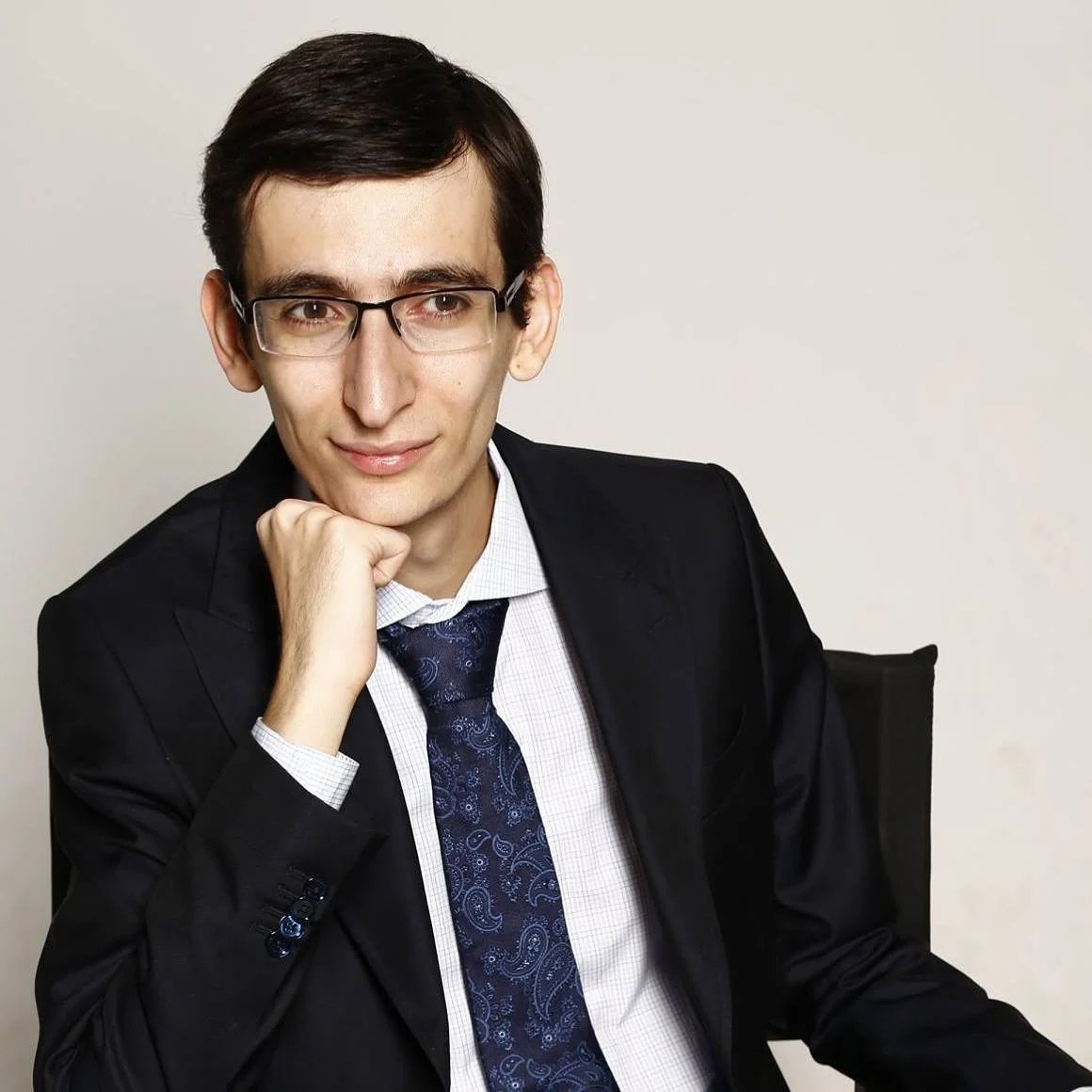
Leonid Nersisyan. Photo from Facebook
“In the month ahead, forcing the Dnipro seems impossible,” the military expert believes. “But in the medium term, Ukraine will be able to control the water level in the Dnipro as the Kakhovka HPP is no longer a thing. They may start dumping more water at the dams that lie upstream and dry up the Dnipro a little bit and make crossing it easier. Let’s say, in August. That is, in the short term, this situation is more of a negative factor, and in the medium term, it is rather positive.”
Nersisyan says that in order for the Ukrainian military to capture Crimea during the counteroffensive, they will need to completely disrupt land logistics on the peninsula. That is, Ukraine will need to gain access to Melitopol or the strip of land that connects Crimea to the mainland, somewhere near Armiansk.
“Defending Crimea is a pretty tough challenge,” Nersisyan believes. “If we consider its history, the peninsula is located in a very vulnerable location in terms of geography. Of course, there is now a bridge, but as we saw last year, the bridge is also a vulnerable target. We also saw what happened to the Antonivka bridge in the Kherson region (it was blown up — editor’s note). If Crimea is cut from logistics, capturing it in warfare would be a pretty realistic goal. The question is whether Ukraine is ready to do this from a political perspective. I think various options are being considered, including creating a threat of [Russia] losing Crimea so as to have an advantage in negotiations.”
However, Ukraine’s military will not even need to cross the Dnipro in order to reach Crimea, the expert says. Capturing the Zaporizhzhia region and accessing the sea coast should be enough. At the same time, it should be noted that the water simply washed away the defensive positions of both sides after the breakthrough of the dam, including minefields. When the water level drops, the banks will be less protected from both sides.
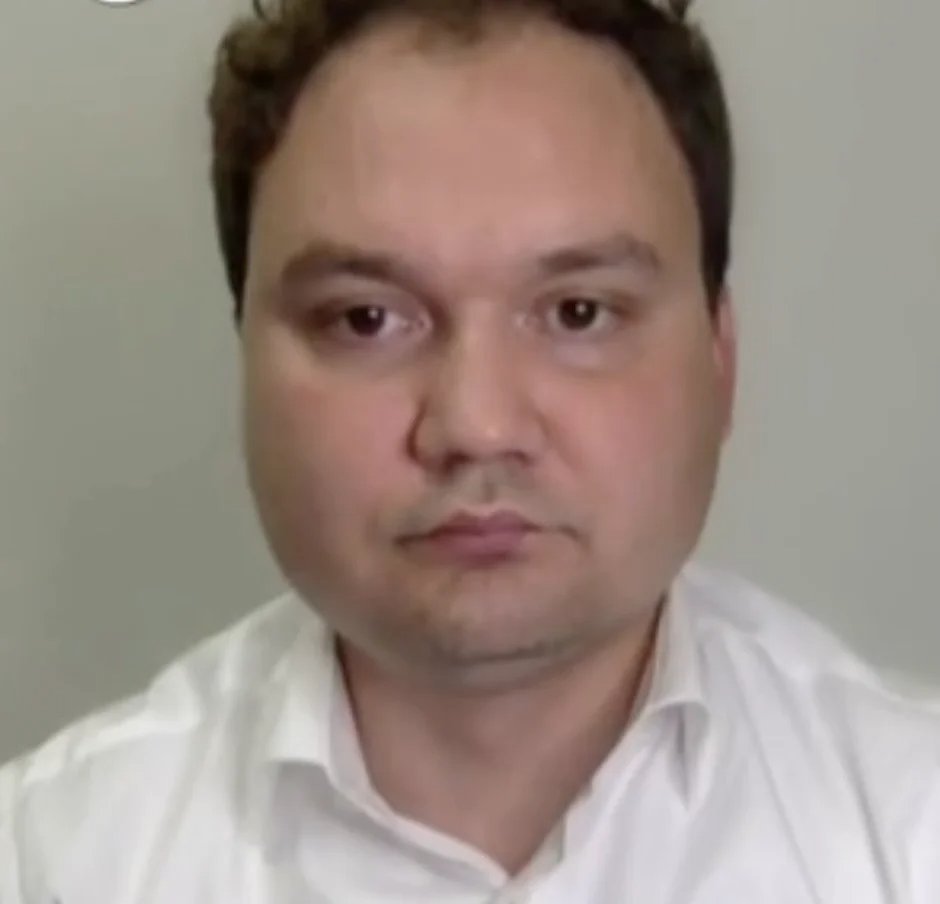
Oleksandr Musiyenko. Photo: screenshot of a video.
Ukrainian military expert Oleksandr Musiyenko believes that the Russian troops blew up the HPP as they understood that Ukraine’s military would intensify their operations in the Zaporizhzhia direction, and there was a great threat that Ukraine’s military would cross the Dnipro and attack the eastern bank of the river.
“But if we look at how this affects plans for the liberation of Crimea, we will see that it has zero effect,” the military expert tells Novaya-Europe. “Firstly, forcing the Dnipro is not the only way towards the de-occupation of Crimea. Secondly, the water level will eventually drop anyway. Therefore, this limits Ukraine’s manoeuvres for some period, but not forever. There are other ways to de-occupy the peninsula.”
Oleksandr Musiyenko is certain that the Crimea de-occupation plan will be successful in the future.
Significant efforts are aimed at that objective, including the intensification of combat in the Zaporizhzhia direction.
“The first stage goal is to break the land corridor that connects Crimea to Russia. The second stage would be a direct advance to the border of the peninsula in order to establish fire control over Russia’s military facilities in Crimea. And the third stage is the liberation of Crimea: either exclusively by military means, or through politics. The peninsula might become besieged and have its military facilities targeted; Ukraine should impose pressure to force the Russian troops out of Crimea,” Musiyenko predicts.
Join us in rebuilding Novaya Gazeta Europe
The Russian government has banned independent media. We were forced to leave our country in order to keep doing our job, telling our readers about what is going on Russia, Ukraine and Europe.
We will continue fighting against warfare and dictatorship. We believe that freedom of speech is the most efficient antidote against tyranny. Support us financially to help us fight for peace and freedom.
By clicking the Support button, you agree to the processing of your personal data.
To cancel a regular donation, please write to [email protected]
